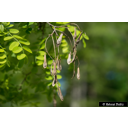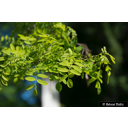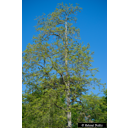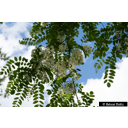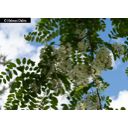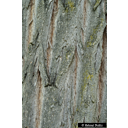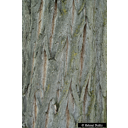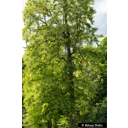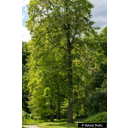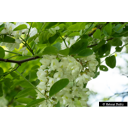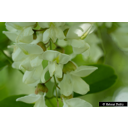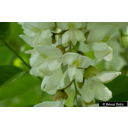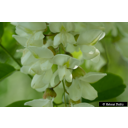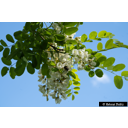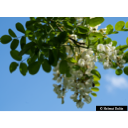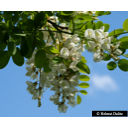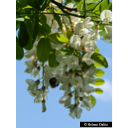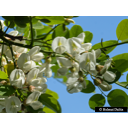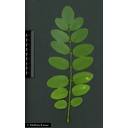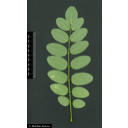Useful information about the taxon (species, subspecies, variety...)
Robinia pseudoacacia L. 1753
Fabaceae (Leguminosae, Papilionaceae)
(APG IV)black locust
Taxon concept: The Plant List (2014), version 1.1
Distribution: USA: northeast, northeast-central, southeast, Oklahoma; naturalised in Europe
Size: 10 - 25 (m)
Flowering period: IV
Robinia pseudoacacia L. - Accepted: Robinia pseudoacacia L. bei The Plant List (2010); Familie: Fabaceae (Leguminosae, Papilionaceae) (APG III)Robinia pseudoacacia L. - Accepted: Robinia pseudoacacia L. bei Zander 2008; Familie: Fabaceae (Leguminosae, Papilionaceae) (Zander 2008)Robinia pseudoacacia L. - Accepted: Robinia pseudoacacia L. bei The Plant List (2014), version 1.1; Familie: Fabaceae (Leguminosae, Papilionaceae) (APG III)Robinia pseudoacacia L. - Accepted: Robinia pseudoacacia L. bei Schmeil-Fitschen 2019; Familie: Fabaceae (Leguminosae, Papilionaceae) (APG IV)Robinia pseudoacacia L. - Accepted: Robinia pseudoacacia L. bei BfN Checklist Flora DE; Familie: Fabaceae (Leguminosae, Papilionaceae) (APG IV)Robinia pseudoacacia L. - Accepted: Robinia pseudoacacia L. bei World Flora Online - APG IV (Angiosperms); Familie: Fabaceae (Leguminosae) (World Flora Online - APG IV (Angiosperms))
- Color of flower
- white to cream white
- Flowers
- hermaphrodite flowers; fragrant flowers in pendulous racemes
- Flower ecology
- insect-pollinated (entomophilous)
- Life form
- woody, tree
- Leaves
- imparipinnate compound, 10-30 cm long, leaflets opposite
- Foliage persistence
- deciduous
- Fruits
- dark brown, 5-10 cm long legume with 4-10 seeds
- Fruit ecology
- wind-dispersed (anemochorous) and gravity-dispersed (barochorous)
- Soil conditions
- on fresh to moderately dry, nutrient-rich, medium to deep, loose, sandy gravel or loam soils
- Light conditions
- sunny
- Root type
- intense root system
- Succession type
- pioneer of immature soil, soil stabiliser
- Natural occurrence (habitat)
- oak forests, coppice forests, roadsides; from lowland to middle highland
- Comment to ecology
- accumulates nitrogen due to rhizobia symbiosis, soil quality improver, beekeeping plant
- Vegetation typ and synecology (plant community)
- temperate deciduous forests; e.g. in the association Balloto-Robinietum
- Constraints according moisture
- not tolerant of waterlogging
- Safety advice
- toxic!
- Status of alien naturalisation
- often cultivated at roadsides and in park areas or silvicultural introduced and escaped; established neophyte
- Life span
- 60-100 years (in rare cases over 300 years old)
- Usage
- wood is used as firewood; wood is suitable for fence posts, boatbuilding, furniture, flooring and railway sleepers; flowers can be used for obtaining honey and for cooking, e.g. as sirup
- Bark
- greyish brown to dark brown bark
Breunig, T. et al. (2021): Rote Liste der Farn- und Blütenpflanzen Baden-Württembergs.; Bundesamt für Naturschutz (BfN) (1999-2001 and ongoing): Floraweb - Daten und Informationen zu Wildpflanzen und zur Vegetation Deutschlands. www.floraweb.de.; Erhardt, W., Götz, E., Bödeker, N. & Seybold, S. (2008): Der große Zander. Enzyklopädie der Pflanzennamen. Band 2. Arten und Sorten. Eugen Ulmer KG, Stuttgart (Hohenheim), 18. Aufl., 2103 S.; Haider, M. et al. (2005): Wildbienenkataster. See: https://www.wildbienen-kataster.de; Maurizio, Anna et al. (1982): Nektar und Pollen - die wichtigsten Nahrungsquellen der Honigbiene. 4. Ehrenwirth, München, 3, überabeitete Auflage; Metzing, D. et al. (2018): Rote Liste und Gesamtartenliste der Farn- und Blütenpflanzen (Trachaeophyta) Deutschlands .; Ministerium für Ernährung, Landwirtschaft, Umwelt und Forsten, Baden-Württemberg (Hrsg.) (1985): Pflanzenkatalog zur Verbesserung der Bienenweide und des Artenreichtums (Kurztitel: Bienenweidekatalog); Oberdorfer, E. (2001): Pflanzensoziologische Exkursionsflora. Für Deutschland und angrenzende Gebiete. Eugen Ulmer Verlag, Stuttgart, 8., stark überarb. u. erg. Aufl, 1056 S. 978-3-8001-3131-0.; Pritsch, Günter et al. (1985): Bienenweide.. Neumann-Neudamm, Melsungen; Pritsch, Günter et al. (2007): 200 Trachtpflanzen erkennen und bewerten.. Kosmos, Stuttgart; Schick, B. & Spürgin, A. (1997): Die Bienenweide. Eugen Ulmer Verlag, Stuttgart, Auflage: 4., völlig neubearb. u. erw. A., 216 S. 978-3800174188.; The International Plant Names Index (2009). Published on the Internet http://www.ipni.org; Courtesy to IPNI, 2009. Exported from IPNI at date: 2009-09-22 20:17:51; Westrich, P. et al. (2018): Die Wildbienen Deutschlands.. Ulmer Verlag ISBN 978-8186-0123-2.;
Diese Webseite verwendet Google Maps, um Karten und Standorte von Pflanzen in den Hohenheimer Gärten anzuzeigen. Dadurch werden unter Umständen Daten an Google weitergeleitet, was mit einer Verarbeitung Ihrer personenbezogenen Daten verbunden sein kann. Die Datenschutzerklärung von Google finden Sie hier: Datenschutzerklärung von Google
| Sex | Standort | Accession number | Planting year | Donation | IPEN | Lat. | Long. |
|---|---|---|---|---|---|---|---|
| Parzelle S | LG-S-030-25232 | 1998 | + | XX-0-HOH-LG-S-030-25232 | 48,7072030873 | 9,2112521757 | |
| Parzelle G | SP-GB-062-10039 | 2017 | XX-0-HOH-SP-GB-062-10039 | 48,7105400533 | 9,2141368323 | ||
| Parzelle L | SP-LB-002-10146 | 2022 | XX-0-HOH-SP-LB-002-10146 | 48,710395012 | 9,2145340437 |

